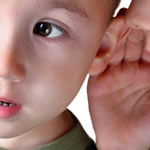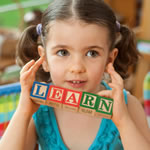Child development
Behaviorism (John B. Watson – 1913)
Thorndike and Pavlov provided
important contributions to behavioral psychology, but it was John B. Watson
(1878-1958) who championed the popular behaviorist movement. Pavlov’s
contribution was made from the discipline of physiology and was somewhat
indirect. His connection with American behavioral psychology was initially made
by Watson, who felt that Pavlov’s experiments provided a good example of a
sound experimental method used to observe the conditioning process of the
secretory reflex, by monitoring the flow of saliva (Watson, 1916, p. 92; 1928,
p. 35; 1930, p. 50). As for Thorndike, it is unlikely that he would have
labeled himself a ‘behaviorist’, since it wasn’t until 1913 that the term began
to come into vogue. This new term, and the perspective on the study of
psychology to which it referred, quickly became the dominating school of
psychology in American universities. It was in his article entitled, Psychology
as the Behaviorist Views It, that Watson (1913) positioned behavioral
psychology as “a purely objective experimental branch of natural science” with
a “theoretical goal” of “prediction and control of behavior” (p. 158). Watson
(1928) more plainly defined behaviorism by saying that,
Behaviorism is the scientific study
of human behavior. Its real goal is to provide the basis for prediction and
control of human beings: Given the situation, to tell what the human being will
do; given the man in action, to be able to say why he is reacting in that way.
(p. 2)
Later, in reflecting on the
behaviorist movement, he wrote,
Behaviorism, as I tried to develop
it in my lectures at Columbia in 1912 and in my earliest writings, was an
attempt to do one thing—to apply to the experimental study of man the same kind
of procedure and the same language of description that many research men had
found useful for so many years in the study of animals lower than man. (Watson,
1930, p. v)
Watson’s initial research focused on
animal subjects such as rats (1903), rabbits (Watson & Watson, 1913), birds
(e.g., 1907; 1908a; 1910), and monkeys (1908b; 1909). But by the year 1919 he
had been able to apply the same experimental procedures to the study of man—the
goal he had established for himself in his 1913 article. This article has come
to be referred to as the Behaviorist Manifesto.
Through his own efforts and through
the reports of other researchers working in the same field, Watson collected
data through “daily observation of several hundred infants from birth, through
the first thirty days of infancy and of a smaller number through the first
years of childhood” (Watson, 1930, p. 118). From this data he concluded that
“young children taken at random from homes of both the poor and of the
well-to-do do not make good subjects” (p. 149) because their behavior was too
complex. His solution to this problem was to study hospital-reared children
belonging to wet nurses. Perhaps his most famous experiments were those
conducted to establish conditioned emotional responses in “Little Albert” by
exposing him to various small animals and simultaneously sounding a loud noise
that had been found to elicit crying. Through repeated pairing of the animals
with the noise, the animals themselves came to elicit responses of fear,
crying, and avoidance behavior—where previously they had not (Watson &
Rayner, 1920). Several other experiments conducted with children are accounted
in Watson’s 1930 publication entitled, Behaviorism.
Watson’s perspective on
learning—i.e., his theory of habit formation—is illustrated in the following
example generalized from his observations of several children in similar
situations:
To make the whole process a little
more concrete, let us put in front of the three-year-old child, whose habits of
manipulation are well established, a problem box—a box that can be opened only
after a certain thing has been done; for example, he has to press inward a
small wooden button. Before we hand it to him, we show him the open box
containing several small pieces of candy and then we close it and tell him that
if he opens it he may have a piece of candy. This situation is new to him. None
of his previously learned formed manipulation habits will completely and
instantly work in this situation. None of his unlearned reactions will help him
very much. What does he do? That depends upon his previous organization. If
well organized by previous handling of toys, he goes at the problem at once—(1)
he picks the box up, (2) he pounds it on the floor, (3) he drags it round and
round, (4) he pushes it up against the base-board, (5) he turns it over, (6) he
strikes it with his fist. In other words, he does everything he has learned to
do in the past in similar situations. He displays his whole repertoire of
acts—brings all of his previously acquired organization to bear upon the new
problem. Let us suppose that he has 50 learned and unlearned separate responses
at his command. At one time or another during his first attempt to open the
box, let us assume that he displays, as he will, nearly all of them before he
pushes the button hard enough to release the catch. The time the whole process
takes, we will say, is about twenty minutes. When he opens it, we give him his
bit of candy, close up the box and hand it to him again. The next time he makes
fewer movements; the third time fewer still. In 10 trials or less he can open
the box without making a useless movement and he can open it in two seconds.
(Watson, 1930, p. 204)
Watson explained this instance of
learning—the ability to open the box with increasing speed and with fewer and
fewer useless movements—as a function of frequency and recency.
The act that is performed most frequently persists while the rest die away. The
act that has been performed most recently is more likely to appear sooner in the
next succeeding trial. Watson’s explanation of recency and frequency as the
basis for habit formation was criticized by some writers, and specific
experiments were performed to demonstrate the inadequacy of these two factors
alone to account for learning (Gengerelli, 1928). However, these factors
do not form Watson’s complete picture of learning. In his introduction to a
republication of Watson’s Behaviorism (Watson & Kimble, 2002, p.
xii) Kimble lists nine hypothetical laws of learning identified by Watson.[1] The first two are frequency and recency. The remaining seven
are
3. Conditioning is a process of
stimulus substitution: “The [conditioned stimulus] now becomes a substitute
stimulus—it will call out the [response] whenever it stimulates the subject”
(p. 21)
4. The process of conditioning is
ubiquitous, “So far as we know we can substitute another stimulus for any
stimulus calling out a standard reaction” (p. 22). Thus, learning never
produces truly new responses. “The organism starts out life with more unit
responses than it needs” (p. 24). The process that appears to establish new
responses “concerns itself really with stimulus substitutions and not reaction
substitutions (pp. 25-26).
Laws 5-9 came from Pavlov, by way of G. V. Anrep (Watson does not give a
reference).
5. “Conditioned responses [may be] temporary and unstable. After periods of no
practice they cease to work [but they can] be quickly reestablished.”
6. “The substituted stimulus can be made [so specific that no] other stimulus
of its class will then call out the reflex.” But, in apparent contradiction to
this idea, Watson also noted that conditioned responses generalize (transfer)
to similar conditioned stimuli.
7. “The magnitude of the response is dependent upon the strength of the
[conditioned] stimulus”.
8. “There is a marked summation effect. If a dog is conditioned separately to
[two stimuli], there is a marked increase in the [strength of the response] if
the stimuli are given simultaneously.”
9. “Conditioned responses can be ‘extinguished’” (pp. 28-29).
Though Watson’s role as the
recognized founder of behaviorism as a school of psychology is clear (Morris
& Todd, 1999), his impact on educational learning theory is limited, as
evidenced by the (at best) tangential coverage he is given in comprehensive
books on learning theory (e.g., Bohlin et al., 2009; Bower & Hilgard, 1981;
Driscoll, 2000; Eggen & Kauchak, 1999; Hilgard, 1948; O’Donnell et al.,
2007; Olson & Hergenhahn, 2009; Ormrod, 2003; Sternberg & Williams,
2010; Woolfolk, 2010). Perhaps this is because his explanation of frequency and
recency was never fully accepted as sufficient to account for learning, and
because his other laws—as summarized by Kimble—weren’t really unique, with most
of them having been adopted without change from Pavlov.
B.F Skinner - Operant Conditioning
by
Saul McLeod
published 2007, updated 2015
By the 1920s, John B. Watson had left academic psychology
and other
behaviorists
were becoming influential, proposing new forms of learning other than
classical
conditioning. Perhaps the most important of these was Burrhus Frederic
Skinner. Although, for obvious reasons he is more commonly known as B.F.
Skinner.
Skinner's views were slightly less extreme than those of
Watson
(1913). Skinner believed that we do have such a thing as a mind, but that it is
simply more productive to study observable behavior rather than internal mental
events.
The work of Skinner was rooted in a view that classical conditioning was far
too simplistic to be a complete explanation of complex human behavior. He
believed that the best way to understand behavior is to look at the causes of
an action and its consequences. He called this approach operant conditioning.
Operant Conditioning deals with operants - intentional actions that have an
effect on the surrounding environment. Skinner set out to identify the
processes which made certain operant behaviours more or less likely to occur.
BF Skinner: Operant Conditioning
Skinner is regarded as the father of Operant Conditioning, but his work was
based on
Thorndike’s
(1905) law of effect. Skinner introduced a new term into the Law of Effect
- Reinforcement. Behavior which is reinforced tends to be repeated (i.e. strengthened);
behavior which is not reinforced tends to die out-or be extinguished (i.e.
weakened).
Skinner (1948) studied operant conditioning by conducting experiments using
animals which he placed in a '
Skinner Box' which was similar to
Thorndike’s puzzle box.

B.F. Skinner (1938) coined the term operant conditioning; it means roughly
changing of behavior by the use of reinforcement which is given after the
desired response. Skinner identified three types of responses or operant that
can follow behavior.
•
Neutral operants: responses from the environment that
neither increase nor decrease the probability of a behavior being repeated.
•
Reinforcers: Responses from the environment that increase
the probability of a behavior being repeated. Reinforcers can be either
positive or negative.
•
Punishers: Responses from the environment that decrease
the likelihood of a behavior being repeated. Punishment weakens behavior.
We can all think of examples of how our own behavior has been affected by
reinforcers and punishers. As a child you probably tried out a number of
behaviors and learned from their consequences.
For example, if when you were younger you tried smoking at school, and the
chief consequence was that you got in with the crowd you always wanted to hang
out with, you would have been positively reinforced (i.e. rewarded) and would
be likely to repeat the behavior.
If, however, the main consequence was that you were caught, caned, suspended
from school and your parents became involved you would most certainly have been
punished, and you would consequently be much less likely to smoke now.
Positive Reinforcement
Skinner showed how positive reinforcement worked by placing a hungry rat in
his Skinner box. The box contained a lever on the side and as the rat moved
about the box it would accidentally knock the lever. Immediately it did so a
food pellet would drop into a container next to the lever.
The rats quickly learned to go straight to the lever after a few times of
being put in the box. The consequence of receiving food if they pressed the
lever ensured that they would repeat the action again and again.
Positive reinforcement strengthens a behavior by providing a consequence an
individual finds rewarding. For example, if your teacher gives you £5 each time
you complete your homework (i.e. a reward) you will be more likely to repeat
this behavior in the future, thus strengthening the behavior of completing your
homework.
Negative Reinforcement
The removal of an unpleasant reinforcer can also strengthen behavior. This
is known as negative reinforcement because it is the removal of an adverse
stimulus which is ‘rewarding’ to the animal or person. Negative reinforcement
strengthens behavior because it stops or removes an unpleasant experience.
For example, if you do not complete your homework, you give
your teacher £5. You will complete your homework to avoid paying £5, thus
strengthening the behavior of completing your homework.
Skinner showed how negative reinforcement worked by placing a rat in his
Skinner box and then subjecting it to an unpleasant electric current which
caused it some discomfort. As the rat moved about the box it would accidentally
knock the lever. Immediately it did so the electric current would be switched
off. The rats quickly learned to go straight to the lever after a few times of
being put in the box. The consequence of escaping the electric current ensured
that they would repeat the action again and again.
In fact Skinner even taught the rats to avoid the electric current by
turning on a light just before the electric current came on. The rats soon
learned to press the lever when the light came on because they knew that this
would stop the electric current being switched on.
These two learned responses are known as
Escape Learning and
Avoidance
Learning.
Punishment (weakens behavior)
Punishment is defined as the opposite of reinforcement since it is designed
to weaken or eliminate a response rather than increase it. It is an aversive
event that decreases the behavior that it follows
Like reinforcement, punishment can work either by directly applying an
unpleasant stimulus like a shock after a response or by removing a potentially
rewarding stimulus, for instance, deducting someone’s pocket money to punish
undesirable behavior.
Note: It is not always easy to distinguish between
punishment and negative reinforcement.
There are many problems with using punishment, such as:
·
Punished behavior is not
forgotten, it's suppressed - behavior returns when punishment is no longer
present.
·
Causes increased aggression
- shows that aggression is a way to cope with problems.
·
Creates fear that can
generalize to undesirable behaviors, e.g., fear of school.
·
Does not necessarily guide
toward desired behavior - reinforcement tells you what to do, punishment only
tells you what not to do.
Schedules of Reinforcement
Imagine a rat in a “Skinner box”. In operant conditioning if no food pellet
is delivered immediately after the lever is pressed then after several attempts
the rat stops pressing the lever (how long would someone continue to go to work
if their employer stopped paying them?). The behavior has been extinguished.
Behaviorists discovered that different patterns
(or
schedules) of reinforcement had different effects on the speed of learning
and on extinction. Ferster and Skinner (1957) devised different ways of
delivering reinforcement, and found that this had effects on
1. The Response Rate - The rate at
which the rat pressed the lever (i.e. how hard the rat worked).
2. The Extinction Rate - The rate
at which lever pressing dies out (i.e. how soon the rat gave up).

Skinner found that the type of reinforcement which produces the slowest rate
of extinction (i.e. people will go on repeating the behavior for the longest
time without reinforcement) is variable-ratio reinforcement. The type of
reinforcement which has the quickest rate of extinction is continuous
reinforcement.
(A) Continuous Reinforcement
An animal/human is positively reinforced every time a specific behaviour
occurs, e.g. every time a lever is pressed a pellet is delivered and then food
delivery is shut off.
·
Response rate is SLOW
·
Extinction rate is FAST
(B) Fixed Ratio Reinforcement
Behavior is reinforced only after the behavior occurs a specified number of
times. E.g. one reinforcement is given after every so many correct responses,
e.g. after every 5th response. For example a child receives a star for every
five words spelt correctly.
·
Response rate is FAST
·
Extinction rate is MEDIUM
(C) Fixed Interval Reinforcement
One reinforcement is given after a fixed time interval providing at least
one correct response has been made. An example is being paid by the hour.
Another example would be every 15 minutes (half hour, hour, etc.) a pellet is
delivered (providing at least one lever press has been made) then food delivery
is shut off.
·
Response rate is MEDIUM
·
Extinction rate is MEDIUM
(D) Variable Ratio Reinforcement
Behavior is reinforced after an unpredictable number of times. For examples
gambling or fishing.
·
Response rate is FAST
·
Extinction rate is SLOW
(very hard to extinguish because of unpredictability )
(E) Variable Interval Reinforcement
Providing one correct response has been made, reinforcement is given after
an unpredictable amount of time has passed, e.g. on average every 5 minutes. An
example is a self-employed person being paid at unpredictable times.
·
Response rate is FAST
·
Extinction rate is SLOW
Classical conditioning is a reflexive or automatic type of learning in which
a stimulus acquires the capacity to evoke a response that was originally evoked
by another stimulus.
- Ivan
Pavlov (1849 – 1936)
- John B.
Watson (1878 – 1958)
Key Concepts
Several types of learning exist. The most basic form is associative
learning, i.e., making a new association between events in the environment
[1].
There are two forms of associative learning: classical conditioning (made
famous by Ivan Pavlov’s experiments with dogs) and operant conditioning.
Pavlov’s Dogs
In the early twentieth century, Russian physiologist Ivan Pavlov did Nobel
prize-winning work on digestion
[2]. While studying the role of
saliva in dogs’ digestive processes, he stumbled upon a phenomenon he labeled
“psychic reflexes.” While an accidental discovery, he had the foresight to see
the importance of it. Pavlov’s dogs, restrained in an experimental chamber,
were presented with meat powder and they had their saliva collected via a
surgically implanted tube in their saliva glands. Over time, he noticed that
his dogs who begin salivation before the meat powder was even presented,
whether it was by the presence of the handler or merely by a clicking noise
produced by the device that distributed the meat powder.
Fascinated by this finding, Pavlov paired the meat powder
with various stimuli such as the ringing of a bell. After the meat powder and
bell (auditory stimulus) were presented together several times, the bell was
used alone. Pavlov’s dogs, as predicted, responded by salivating to the sound
of the bell (without the food). The bell began as a neutral stimulus (i.e. the
bell itself did not produce the dogs’ salivation). However, by pairing the bell
with the stimulus that did produce the salivation response, the bell was able
to acquire the ability to trigger the salivation response. Pavlov therefore
demonstrated how stimulus-response bonds (which some consider as the basic
building blocks of learning) are formed. He dedicated much of the rest of his
career further exploring this finding.
In technical terms, the meat powder is considered an unconditioned stimulus
(UCS) and the dog’s salivation is the unconditioned response (UCR). The bell is
a neutral stimulus until the dog learns to associate the bell with food. Then
the bell becomes a conditioned stimulus (CS) which produces the conditioned
response (CR) of salivation after repeated pairings between the bell and food.

John B. Watson: Early Classical Conditioning with Humans
John B. Watson further extended Pavlov’s work and applied it to human beings
[3].
In 1921, Watson studied Albert, an 11 month old infant child. The goal of the
study was to condition Albert to become afraid of a white rat by pairing the
white rat with a very loud, jarring noise (UCS). At first, Albert showed no
sign of fear when he was presented with rats, but once the rat was repeatedly
paired with the loud noise (UCS), Albert developed a fear of rats. It could be
said that the loud noise (UCS) induced fear (UCR). The implications of Watson’s
experiment suggested that classical conditioning could cause some phobias in
humans.
Additional Resources and References
Resources
References
- Mackintosh,
N. J. (1983). Conditioning and associative learning (p. 316). Oxford:
Clarendon Press.
- Pavlov, I.
P., & Anrep, G. V. (2003). Conditioned reflexes. Courier Corporation.
- Watson, J.
B. (2013). Behaviorism. Read Books Ltd.
A behaviorist theory based
on the fundamental idea that behaviors that are reinforced will tend to
continue, while behaviors that are punished will eventually end[1].
[wc_row][wc_column size="one-half" position="first"]
Contents Contributors…
Behaviorism is a worldview
that operates on a principle of "stimulus-response." All behavior
caused by external stimuli (operant conditioning). All behavior can be
explained without the need to consider internal…
Ref: https://www.learning-theories.com/classical-conditioning-pavlov.html






 Learning disabilities are neurologically-based processing problems. These processing problems can interfere with learning basic skills such as reading, writing and/or math. They can also interfere with higher level skills such as organization, time planning, abstract reasoning, long or short term memory and attention. It is important to realize that learning disabilities can affect an individual’s life beyond academics and can impact relationships with family, friends and in the workplace.
Learning disabilities are neurologically-based processing problems. These processing problems can interfere with learning basic skills such as reading, writing and/or math. They can also interfere with higher level skills such as organization, time planning, abstract reasoning, long or short term memory and attention. It is important to realize that learning disabilities can affect an individual’s life beyond academics and can impact relationships with family, friends and in the workplace.












